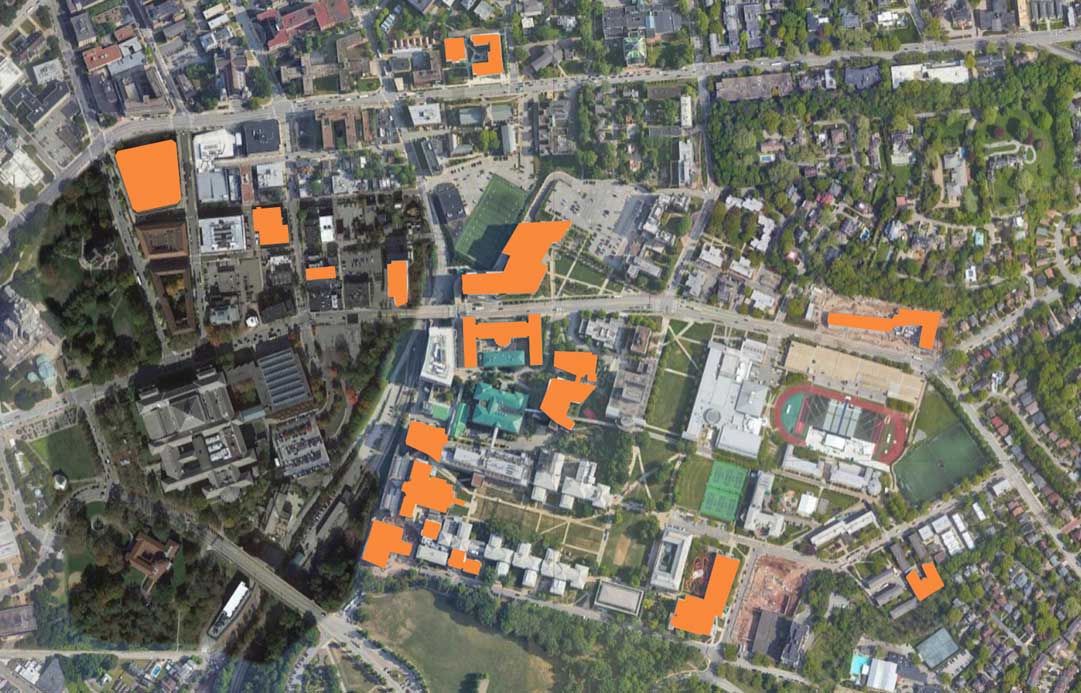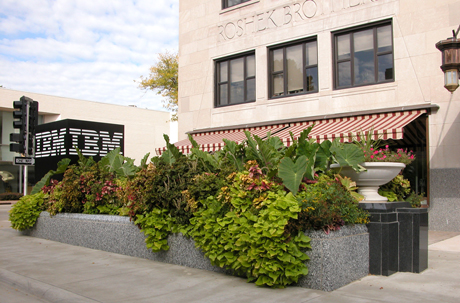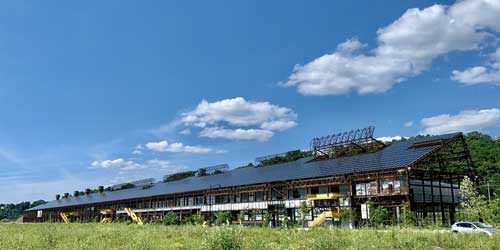10X10 Part II: Lessons from LEED
Continuing our 10×10 series on the top ten lessons from more than 100 LEED certified projects, we’re featuring stories about brands and institutions who champion climate action through their buildings, projects that have catalyzed their local economy, and exceptionally green projects that have reached the highest levels of performance. Our growing portfolio spans two decades and includes projects all over the world!
6. Places That Teach and Inspire: Phipps Conservatory & Botanical Gardens
Multiple Living Buildings and LEED Certifications
2007 – present

The Phipps Conservatory and Botanical Gardens campus in Pittsburgh is a national treasure, where environmental principles are essential to the institutional mission and are also tangible in just about every experience within the place. We have helped Phipps embed this human connection to nature and especially plants in a series of built environment projects that amount to a stunning and inspiring place to visit, and are also a valuable resource for advancing many green technologies and sustainability practices. As an early demonstration of how the Living Building Challenge framework facilitates Net Zero energy and water and comprehensive sustainability, the Center for Sustainable Landscapes is a powerful case study and proof of concept for the green building movement. The latest project, Phipps’ Exhibit Staging Center (ESC) achieved LEED Platinum in addition to WELL v2 Pilot Platinum and Living Building Challenge certifications. Also an example of adaptive reuse, the former public works building added a remediated brownfield site to the campus. Not only are the buildings at Phipps designed and built to the highest environmental standards, they are operated and maintained through sustainable practices for a positive impact year after year. We managed the LEED Platinum Operations & Maintenance certification of the Phipps Production Greenhouse, which was a first for any greenhouse. As a destination that attracts more than half a million people annually, Phipps is a true beacon of success in promoting ecological stewardship, appreciation for the environment, and the technical knowledge to enable even further implementation of these values around the world.
7. Institutional Leadership: Yale University and Carnegie Mellon University
Multiple LEED Certifications
2004 – present

Institutions of Higher Education have for a long time been leaders in implementing sustainable design and construction projects, and for twenty years evolveEA has worked with top universities to ensure they deliver state of the art campus facilities. More than a quarter of all evolveEA’s LEED projects are for higher education clients. Our ongoing relationship with Carnegie Mellon University in particular, has been characterized by dedication to constant improvement and application of lessons learned from every project to the next. At this point we have managed the LEED certifications of millions of SF for CMU alone, and have worked on LEED projects for more than a dozen universities around the United States. This also includes Yale, where the University is building on a strong legacy of green building leadership. Since building the world’s first LEED certified labs, Yale continues to expand its green building portfolio. Their policy is for all new projects to achieve at least LEED Gold certification. For institutions with many buildings, progressive sustainability policies are important to maintain high standards and they also help save on operating costs. For Yale and CMU, and other schools where there are always multiple projects being planned and built, such policies enable institutional planning so that environmental performance targets can be set and achieved. In fact, we were also responsible for co-authoring sections of Carnegie Mellon’s latest Institutional Master Plan that focus on such targets for green buildings over the next decade.
8. Catalytic Design: IBM at the Roshek Building
LEED CI Gold Certified and LEED Core + Shell Platinum
2012

The combined momentum of restoring historic landmarks and leveraging sustainable design can be a game changer for business districts in economic limbo. This was the case in Downtown Dubuque, Iowa’s oldest city, where in the early 2000’s the city and local developers caught on to the potential that Historic Tax Credits can offer and renovated more than forty historic buildings in about a decade and a half. The Roshek Building, a former department store, helped catalyze Dubuque’s downtown through a partnership with IBM that was partly responsible for bringing in thousands of new local jobs during this period and continuing in growth since. IBM chose the location for its Technology Services Center and named Dubuque one of its “Smarter Cities”, boosting the City’s capacity to plan and implement ambitious local programs and projects of all kinds. The Roshek Building was also a leading example of sustainable historic preservation, and with evolveEA’s guidance the project achieved LEED Core + Shell Platinum certification while also excelling in preservation. To top it off, IBM’s design team worked with evolveEA to achieve LEED Gold for Commercial Interiors for their fitout of 130,000 sf for offices in the Roshek Building. The mix of partnerships, private and public funding, and the drive to invest in Downtown Dubuque has been transformational, and at its center the Roshek Building serves as a symbol of the city’s reinvention. IBM has moved on, but the building continues to serve the community and a still vibrant downtown economy.
9. Building Reuse: Mill 19
LEED Gold Certified
2021

Hazelwood Green is a reuse project, not only with its buildings but a massive brownfield area that is being reclaimed by the city and reconnected with the Hazelwood neighborhood. The riverfront development provides vast green spaces, multimodal trails, outdoor public events, and will be a planned mixed use community integrated with the larger Hazelwood neighborhood. evolveEA has consulted on various projects at Hazelwood Green for over a decade, including sustainability consulting on several buildings. One of these is the development’s largest and iconic structure, called Mill 19, a 265,000 SF former steel mill that has been redeveloped to house state of the art manufacturing, research and development facilities. It houses Carnegie Mellon University’s Advanced Robotics Manufacturing and the Manufacturing Futures Institute, among other entities. The mill’s original skeleton supports a massive rooftop solar array that powers the buildings within it—Scalo Solar’s 4,784 solar panels made it the largest installation on a sloped surface in the U.S., and the project was also recognized with a prestigious award from the American Institute of Architects Committee On The Environment (COTE) as one of 2023’s Top Ten green buildings in the country. The project is a stunning example of what is possible when abandoned places are reimagined and a national model for sustainable commercial development.
10. Climate Champions: Lego Campus
LEED Gold Certified
2022

Sustainable practices can be integrated into an organization’s culture as well as their spaces. Architects have the opportunity to green organizations by infusing sustainable values throughout a portfolio of projects, across a campus, into iconic headquarters, or within company strategy. evolveEA led the effort to certify Denmark’s largest LEED certified building. LEGO, the maker of the immensely popular creative toy, outgrew their 1950 headquarters buildings in Billund, Denmark. evolveEA assisted the team in achieving sustainability goals and LEED Gold level certification. LEGO’s sustainability ambitions were presented for project design, construction, and operations. The design team pushed this 543,000 sf project to consider and adopt a variety of sustainability strategies regarding renewable energy, green roofs, healthy materials, and energy modeling. The family of company owners established very high ethical standards for project team members. evolveEA’s own high standards of carbon neutrality and B Corp certification satisfied these requirements and provided the opportunity to explore higher concepts, such as regenerative design. This successful and joyful building is already world-famous with a sustainability pedigree to match.


